Braised Lamb Shanks: Temps and Times for Rich Meat
There’s nothing quite like a good braise. All those vegetables, that rich and unctuous sauce, the fork-tender meat—who could resist? Not us! And especially not if the meat in question is lamb shanks. Lamb shanks bring all the rich, fatty goodness of a braise together with the warm, comfortingly exotic taste of lamb. And we love it! In this post, we aim to give you the critical temperatures as well as some other tips to help you create a braise worth looking forward to. This dish is a kind of big-delicious you don’t get every day! Let’s get into it.
What are lamb shanks?
The shank is the shin. It is the bottom section of the leg of a quadruped that is found between the knee and the ankle. In this case, that “shin” comes from a sheep—preferably of a breed bred for meat, not wool—that is less than a year old.
Because shanks are used for walking, they are tough by nature, but also very flavorful. The toughness comes from the high proportion of collagen and other connective tissues in the leg. For that reason, this is a cut that is best cooked via slow, moist cooking methods, i.e. braising.
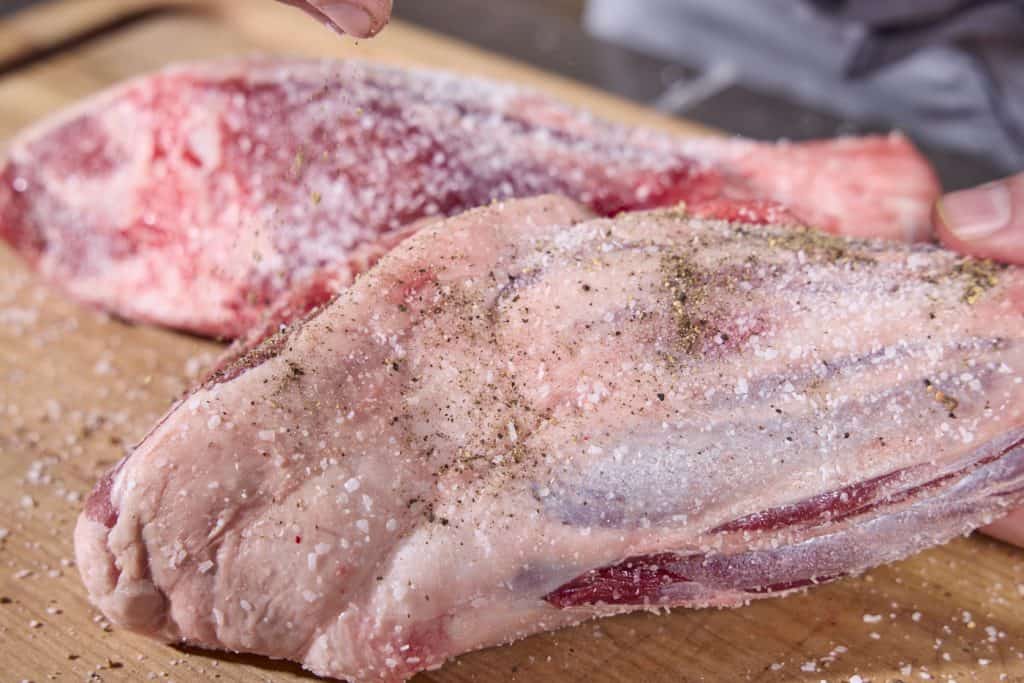
Why braising works and how this braise will go down
Braising is a cooking process by which tough food—usually cuts of meat, but also some fruits or vegetables—are cooked with some liquid, though not enough to cover them. A flavorful liquid, often imbued further with aromatics, comes not more than halfway up the side of whatever is being braised. The braising vessel is covered and cooked either on the stovetop or in a moderate-to-hot oven. This creates a humid environment that is all basically one temperature 2 and is not conducive to evaporation.
That’s a pretty good technical definition, but why do we do it? Why does it matter? It matters because of the collagen that is so plentiful in lamb shanks, as well as in so many other cuts of meat.
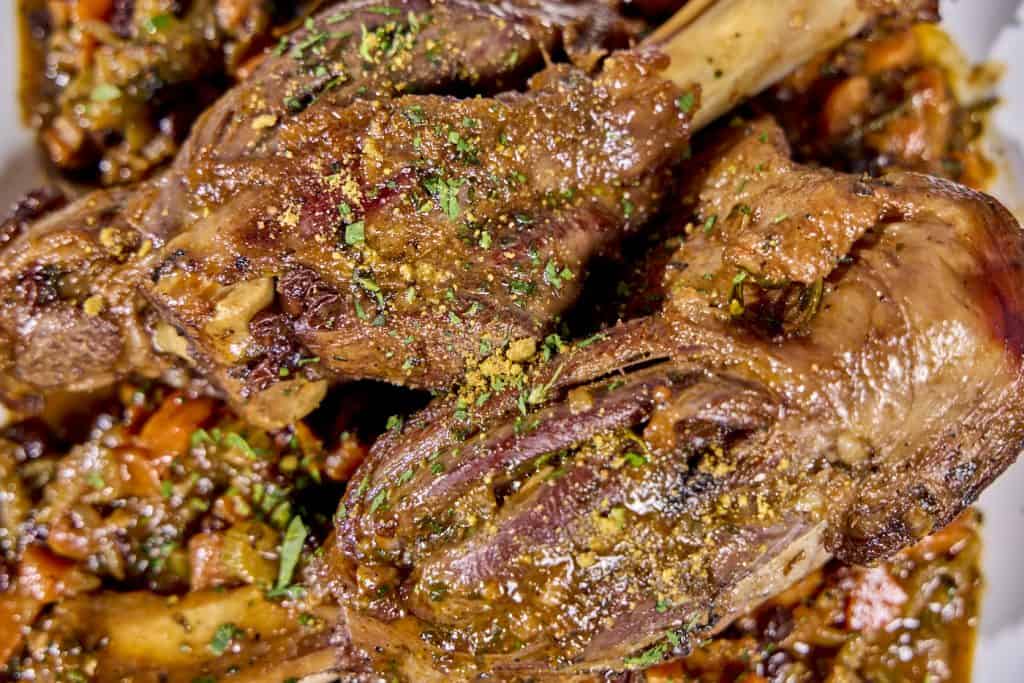
Collagen breakdown
We have written plenty on this blog about collagen breakdown, but it never hurts to review. Collagen is one of the body’s most abundant connective tissues. It holds muscles together, giving them support in their work. But if you heat it to temperatures above 170°F (77°C), it unwinds, unravels, and melts into gelatin. Collagen is nearly impossible to chew through when there is enough of it, but meat that is suffused with gelatin is pleasant, tender, and fun to eat.
Braising provides an environment where collagen breakdown is particularly easy to achieve. In a 100% relative humidity environment like a simmering Dutch oven, there is no evaporative cooling in the meat, so it can push through the temperature range where it would normally stall out and go right on to collagen melting.
Depending on how much collagen you melt into gelatin, your meat can go from tough to tender to fall-off-the-bone. And what’s more, the sauce that you get from braising has a richer, deeper texture from all of the dissolved gelatin in it. It’s quite spectacular.
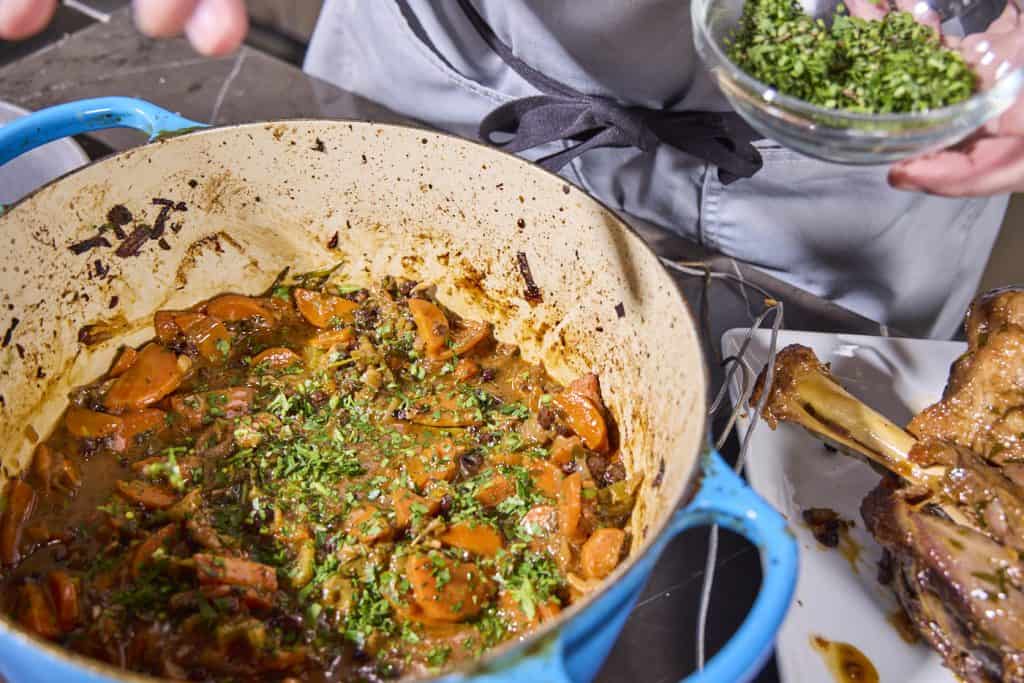
Temperatures for braising lamb shanks
To braise the lamb shanks, use your oven set to 350°F (177°C). Get the braising liquid up to a simmer before putting the pot in the oven, so you don’t have to waste time inefficiently heating it up in the oven. Insert a probe, attached to your ChefAlarm, into one of your shanks and set your high-temperature alarm to 203°F (95°C). By the time the meat comes up to that temperature at that cooking temp, enough of the collagen will have melted to make your shanks fork-tender. It should take about 90 minutes.
That may not seem like a long time if you’re used to rendering collagen for barbecue, but this cut of meat is much smaller than most barbecue, and the animal is younger, with less developed collagen. (A mutton shank would take longer to tenderize, even though it’s from the same breed of animal.)
When the ChefAlarm sounds, verify the temperature with your Thermapen ONE, looking for temperatures lower than your target. Also, feel for a tender texture with its probe.
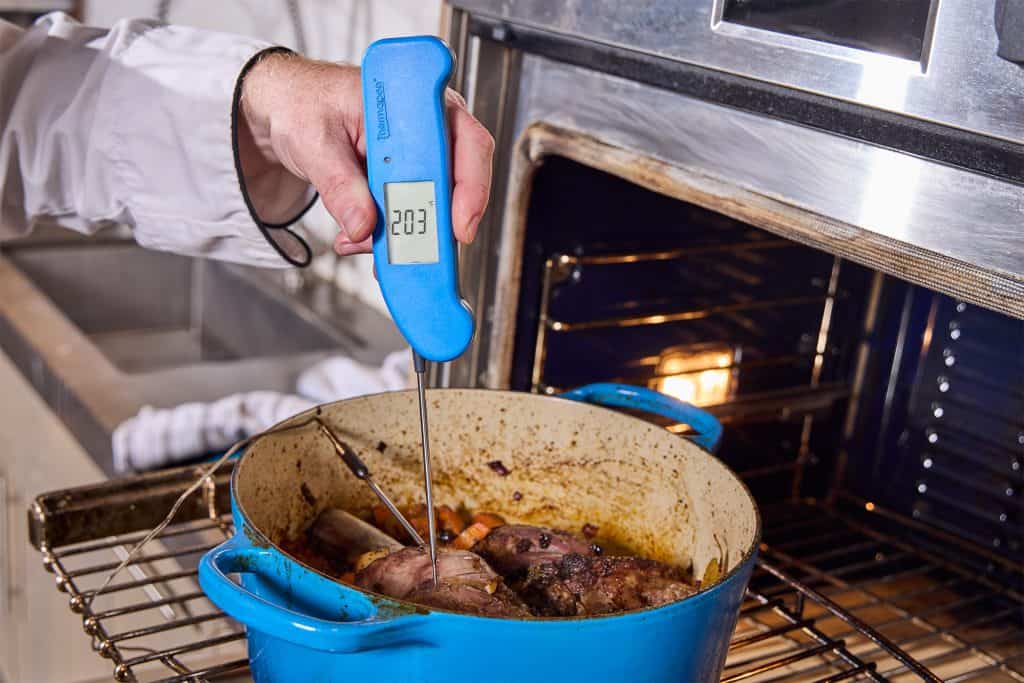
Flavors: what we did and what you can do for your lamb shanks
We kept this braise fairly classic: onion, carrot, celery (a combination called mirepoix [ME-REH-PWAH] in kitchen parlance), some garlic, bay leaf, beef stock, and some red wine. But we also gussied it up a bit with some raisins (the sweet is amazing with all this savory), some harissa, and some ground pistachio. The harissa was not enough to make it spicy, just to add interest, and the pistachio, added after cooking, was a flavorful way to thicken the sauce a little bit more.
But you can do yours however you want! Make it Chinese or Mexican. Make it like you would a curry. The temperatures and times hold true no matter how you make it yours.
We hope you give this cook a try! It made at least one person who tried it decide they might like lamb after all, and we can’t wait to make it again. Happy cooking!
Print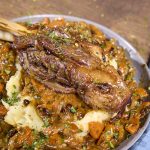
Braised Lamb Shanks Recipe
Description
Adapted loosely from a recipe at SimplyRecipes.com
Ingredients
- 2 lamb shanks (if your pot at home is too small for them, ask your butcher to saw them in half)
- Salt and pepper
- 4 Tbsp olive oil
- 2 large carrots, peeled and sliced about 1/4” thick
- 2 large ribs celery, sliced about 1/4” thick
- 1 large onion, finely chopped
- 5 cloves garlic, chopped
- 1 bunch parsley divided
- 8 good sprigs thyme, divided
- 1 sprig fresh rosemary
- 2 bay leaves
- 2 Tbsp harissa (optional)
- 1 Tbsp tomato paste
- 3/4 C beef stock
- 1/2 C red wine (or use that much more beef stock)
- 1/2 C raisins (I recommend zante currants, which are very small)
- 2–3 Tbsp ground roasted pistachios (optional but very good!)
Instructions
- Preheat your oven to 350°F (177°C)
- Season the shanks generously with salt and pepper.
- 2 Tbsp oil in a large, heavy pot such as a Dutch oven.
- When the oil is very hot, brown the lamb shanks on all sides until golden brown. Work one shank at a time, if necessary.
- Remove the shanks from the pot and add the rest of the oil. Add the chopped garlic, carrots, celery, and onion to the pan and sauté over medium-high heat until the onion is translucent and the veggies are just coloring on the edges.
- While the veggies cook, strip 6 of the thyme sprigs and finely chop together with half of the parsley. Set aside.
- When the veggies are ready, scoot them to one side of the pan. In the blank space, add the tomato paste and harissa. Cook in the bare pan until somewhat thickened and toasty looking. Stir together with the veggies. Reduce the heat to medium.
- Add the beef stock and wine to the pot. Add two whole sprigs of thyme, the sprig of rosemary, and the rest of the parsley as well as the bay leaves.
- Nestle the shanks deep in the bed of aromatics. Scatter the raisins over the surface of the braise.
- Insert a probe into the largest shank, right in the thickest part that will heat the slowest. Put the lid on the pot.
- Put the pot in the oven and set the high-temp alarm on your ChefAlarm to 203°F (95°C). Cook.
- When the alarm sounds after about 90 minutes, verify the temperature and tenderness of your shanks with your Thermapen ONE. The shanks should be just tender enough to shred from the bone with a fork. If you like them to be more tender so that they fall right off, give them another half hour.
- If the shanks are all at 203°F (95°C) and tender, remove the pot from the oven. Remove the shanks from the pot and stir the ground pistachios into the sauce to thicken it. Also stir in the reserved parsley/thyme mixture, to taste.
- Serve the shanks with the sauce and vegetables from the braise.


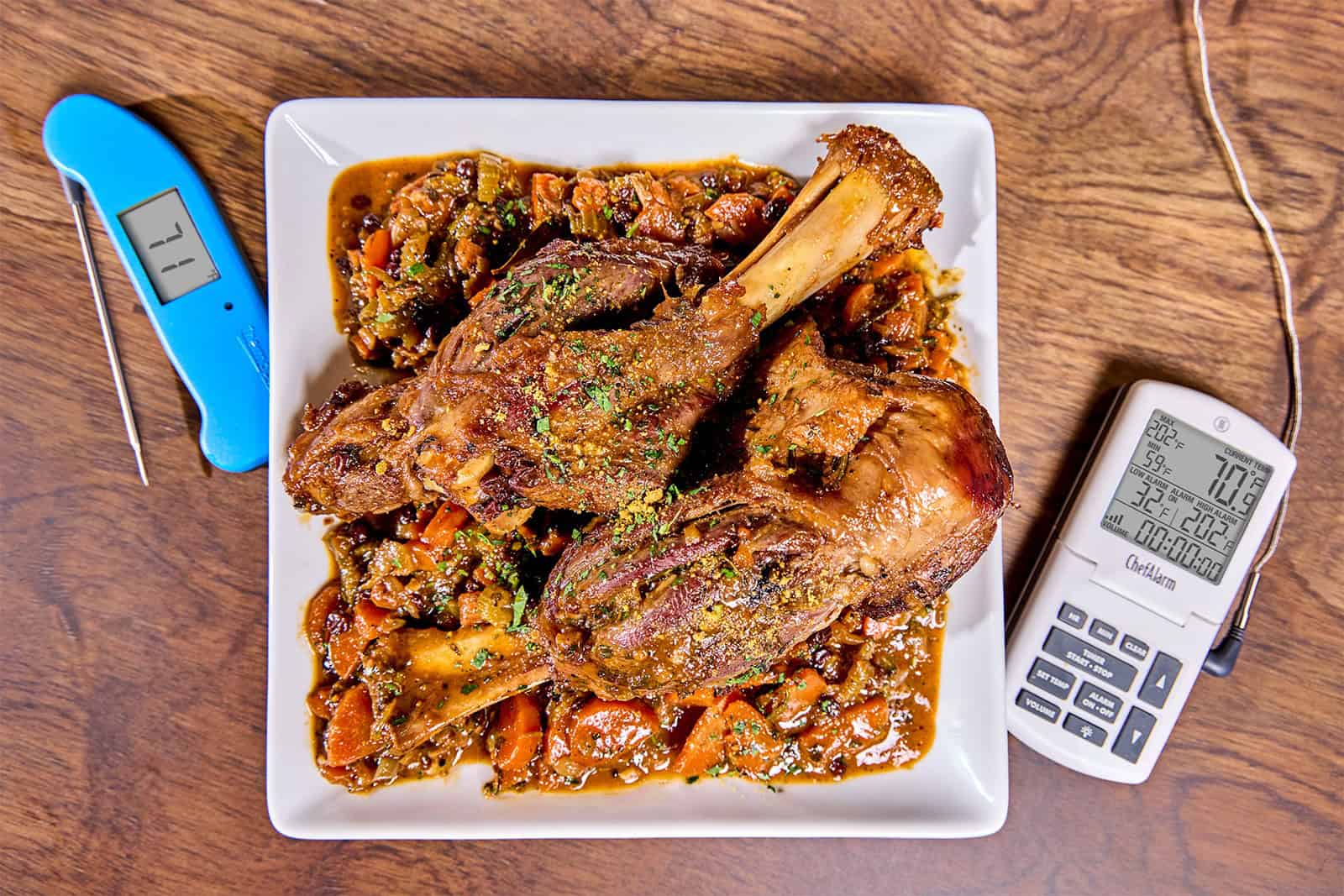
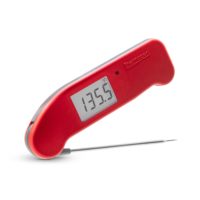

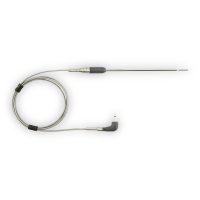
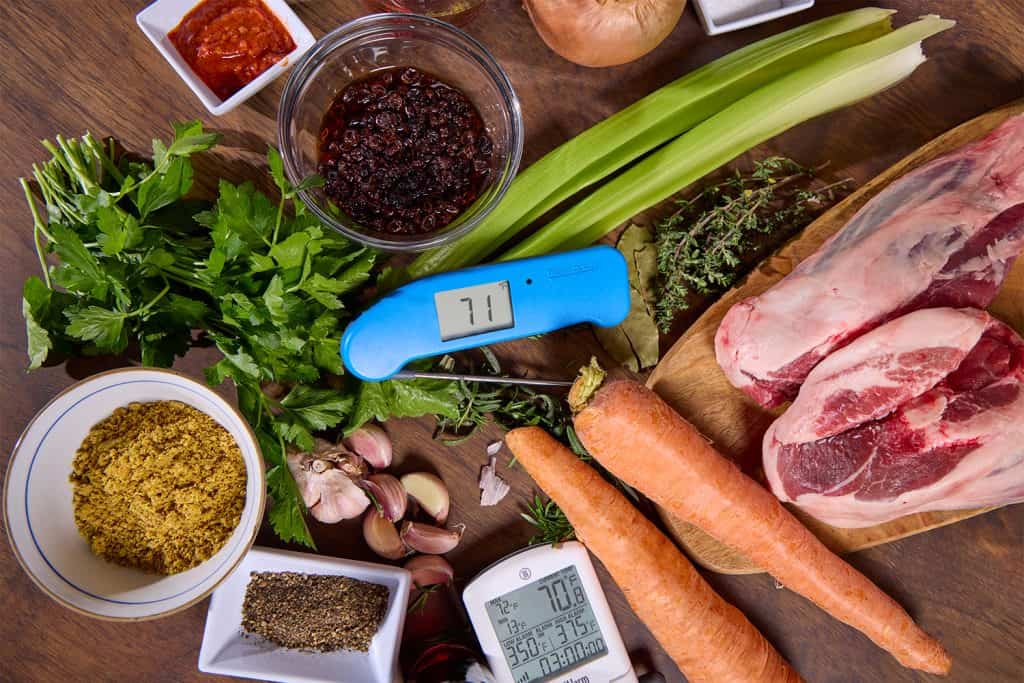
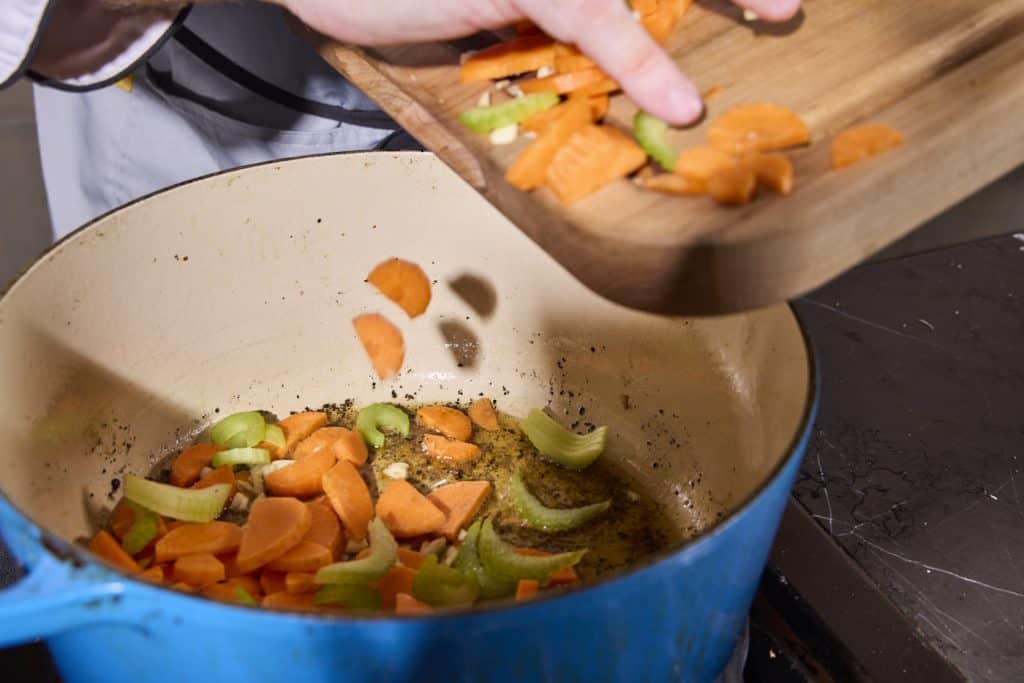
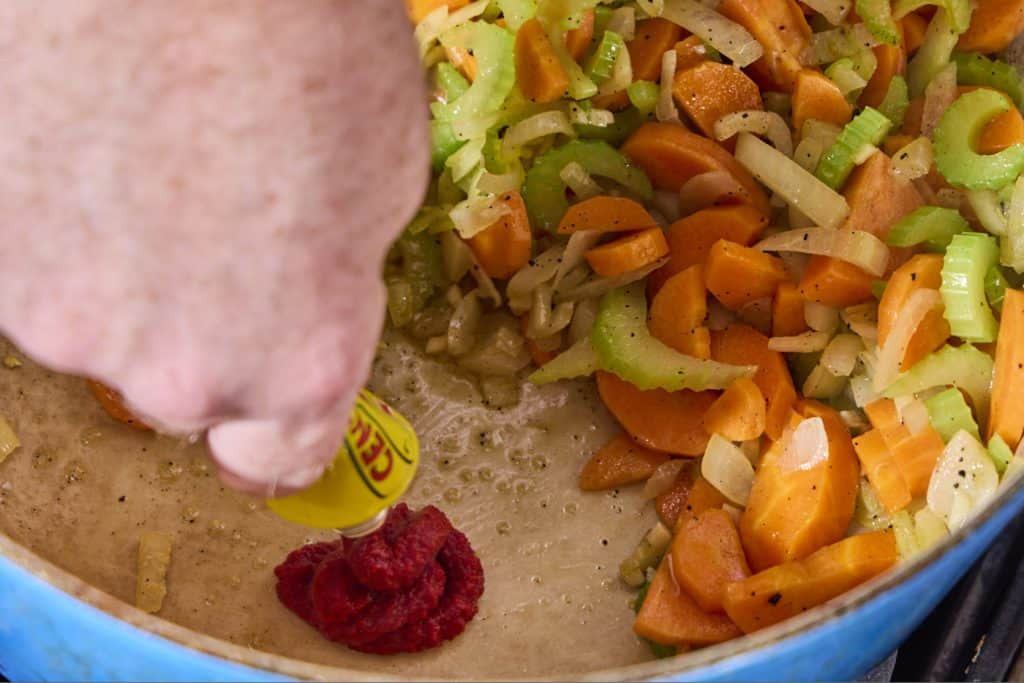
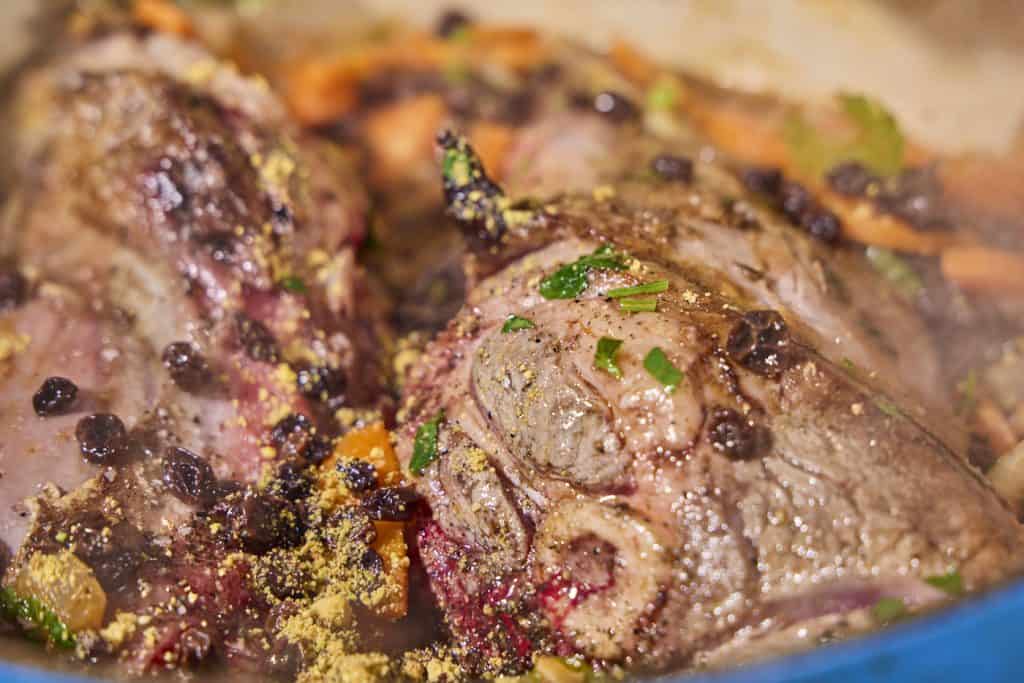
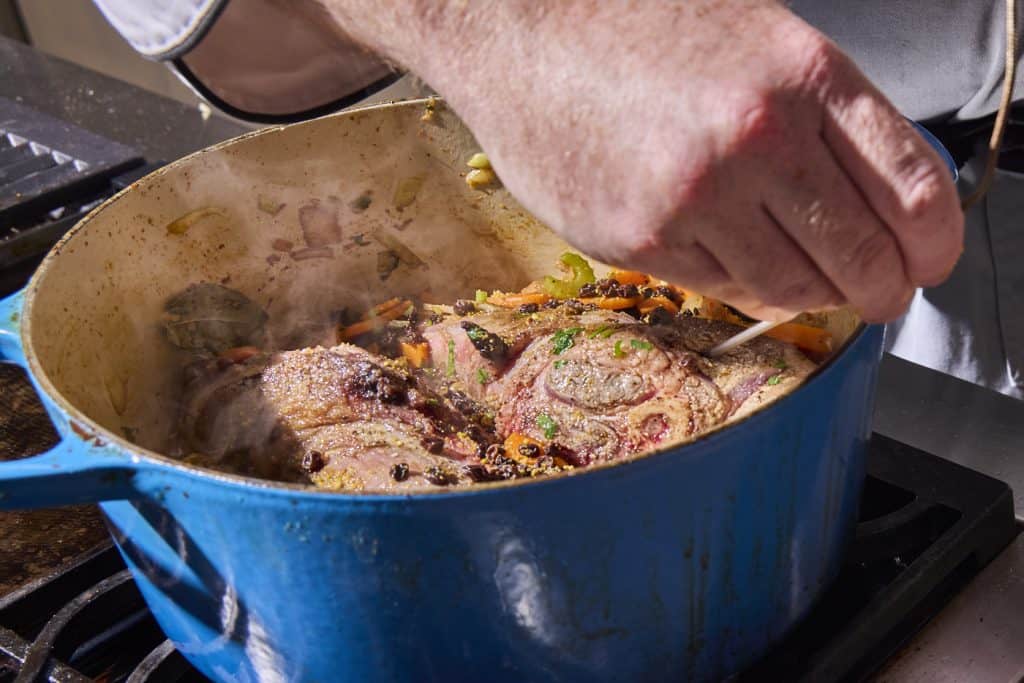
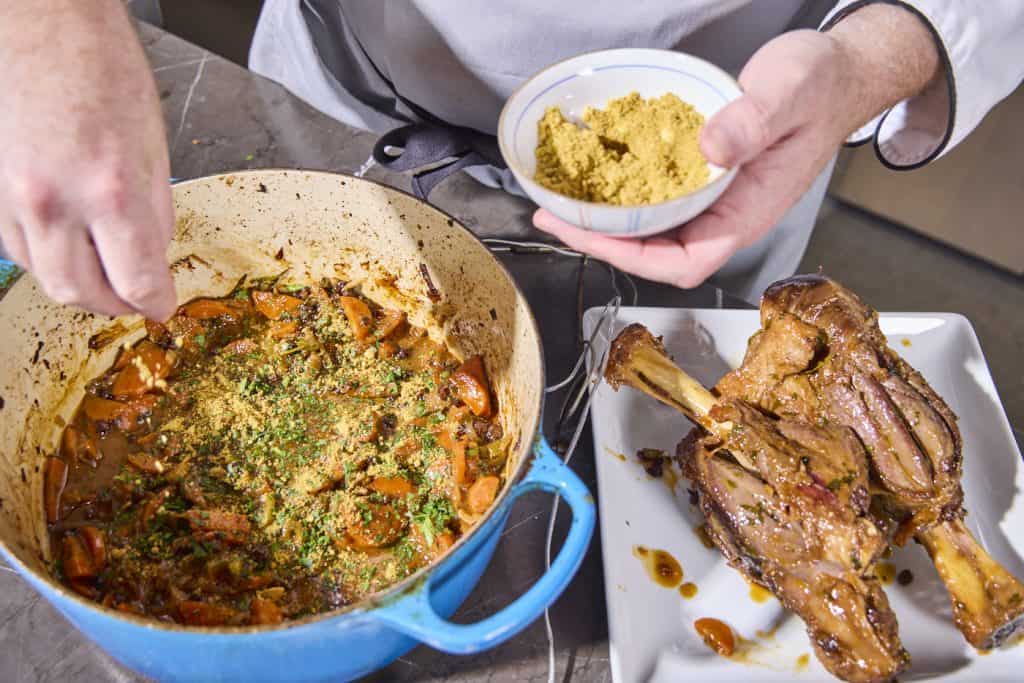
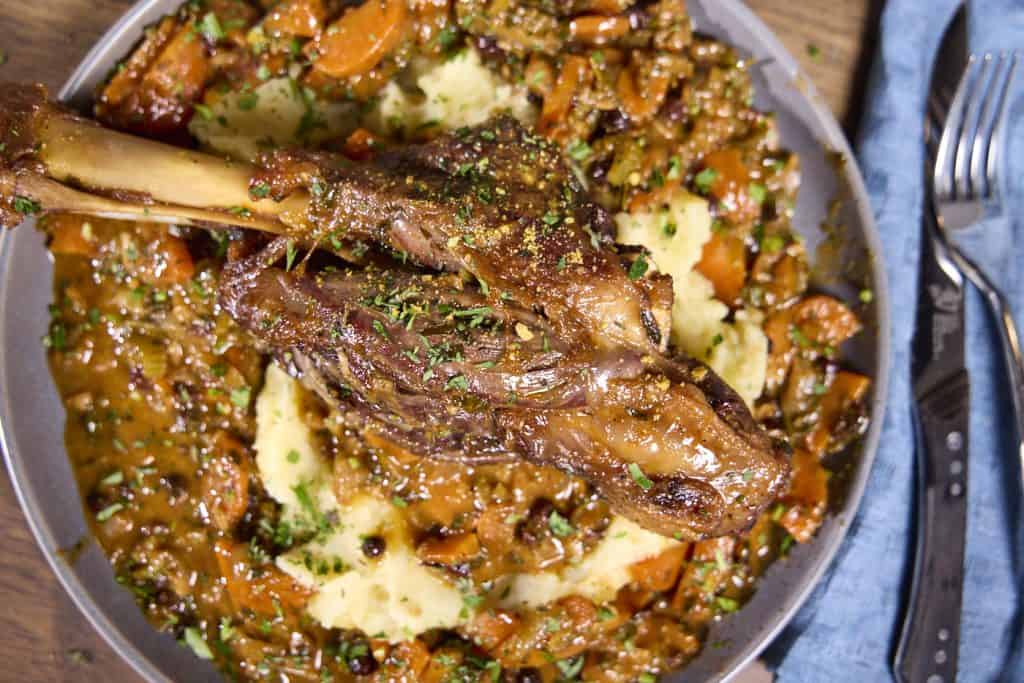
You had me until raisins!
Haha! Well, that’s fair, not everyone likes them in a braise. I do recommend some form of dried fruit, though. Dried apricots are wonderful in a braise, as are quartered prunes. But if all those “fruity” fruits are too much, consider a handful of sun-dried tomatoes. All of them will ad a rich sweetness to the final sauce.
Is this recipe for 2 people or 4 people or something else?
It would be helpful if your recipes, which are so yummy, gave this information.
Thank you.
This is for 2-4 people. A whole lamb shank can be a rich feast for one, but is a nice meal for two.
Our household loves braised lamb shanks for a special dinner treat. Our recommendations: (1) Trim the fat off the shanks really well before cooking. You’ll get milder, less gamey tasting meat. (2) Use chicken stock instead of beef, maybe three parts stock to two parts wine. For the wine, we like to use a Zinfadel. (3) Once the shanks are mostly done, take the lid off the pot for another 30 minutes of cooking to brown the meat a little, adding a little water to the pot if necessary to keep the vegetables moist in their sauce.
Thanks for the tips!
Sounds delicious, Martin. Question: could I use the same technique, including the 203-degree final temperature, for fresh pork shanks? We have a great fondness for pork shank osso buco…done similarly with mirepoix and seasonings, substituting chicken stock for the beef stock, adding a healthy slug of dry Marsala, and garnishing with a gremolata which contains orange zest – a trick I learned from a Tyler Florence recipe.
You ABSOLUTELY could! And should! But, being larger, they will take longer, just so you know.
Where are the directions for making in a Slow Cook Pot?
I’d sautee everything in a pan and then put it into the slow cooker, then insert the probe and let it go, covered.
What’s the length of these including the bone. I have a 4 quart dutch oven and it’s 8 inches on the bottom. Will I have enough room for them or will I need the butcher to cut the bone down a bit
The shanks we got were closer to 9–10 inches. I’d have your butcher trim them down for you.
This was the first time I’ve ever made lamb shanks. This recipe turned out so great it definitely won’t be the last time! It was delicious. I baked it for 1 1/2 hours, and the temperature was 208 and climbing, but the meat was perfectly done. The only change I made to the recipe was to cut the amount of raisins in half, as I have to avoid too much sugar. Next time I may eliminate them entirely.
Will this work equally well on a leg of lamb?
Yes and no. A leg of lamb is made of many muscles, some of which will respond well to braising and some that will not. I’d opt for roasting, smoking, or grilling a lamb leg instead.